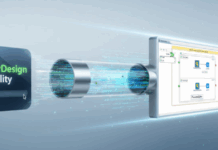Stage plays entertained kings and queens throughout the ages – and anyone else wealthy enough. Think about the film “Shakespeare in Love.” Playwrights were impoverished artists who did it for the love and recognition. They were the ultimate story tellers.

Then came the film, with the first-ever public screening of a film in 1895. The early films were no more than capturing a stage play onto celluloid, originally with subtitles. Roll the clock forward to 1927 and film The Jazz Singer. Suddenly, movies became very different from a stage play. They were set in real locations, with multiple cameras taking different perspectives. The cleverness of the words, the emotion of the storyline and the imagery were replaced with so-so dialogue and fantastic sets. Jump forward to today and a film is interactive. Don’t like the ending? Choose another. Take a look behind the scenes. See how it was made and what the director decided was suitable only for the cutting room floor.
Books (and magazines) are going through their own evolution. The first major breakthrough was the printing press, coupled with increasing literacy. eBooks are now making their way into the 21st century. Currently, most eBooks are simple electronic copies of paper books with a little reformatting to make them readable on the wide range of eBook readers. The ePub standard has potential, but limited take up, to allow books to be interactive – there is still the DRM (Digital Rights Management) hurdle to get over. The publishing industry hasn’t learned from the music industry that DRM ultimately fails because it becomes too unwieldy and discourages widespread take up. But I digress. eBooks still some have way to go, and possibly they should look at the magazine industry.
Magazines in many ways are more advanced. Perhaps because many quickly went online to save costs, increase distribution and get wider advertising coverage. Computer Weekly, which started this month in 1966, stopped its print edition. Advertising in the print copy had dwindled and without it, of course, magazines cease to exist. Surprisingly, subscriptions to some print, glossy magazines are on the rise in parallel with the take up of the online access.
 There are some great examples of really interactive magazines. These have been spawned by the iPad, as they’ve been designed to run as iPad applications. Examples are Evo, the fantastic car magazine (yes, I am a petrolhead) and companies like Zinio, who are offering a platform to help magazine publishers up their game. This means combining different media – text, video, audio – with popups and rollovers to give further information, making reading exploration fun rather than linear.
There are some great examples of really interactive magazines. These have been spawned by the iPad, as they’ve been designed to run as iPad applications. Examples are Evo, the fantastic car magazine (yes, I am a petrolhead) and companies like Zinio, who are offering a platform to help magazine publishers up their game. This means combining different media – text, video, audio – with popups and rollovers to give further information, making reading exploration fun rather than linear.
If we take a look inside a corporation and the way employees consume information, particularly how they do their job (processes), we are virtually back to the world of playwrights and storytelling. Meanwhile, the script is pretty sketchy with continuity issues in “film industry speak.” Continuity is the consistency of the characteristics of persons, plot, objects, places and events seen by the reader or viewer over some period of time.
In some companies, we have seen processes and the supporting information (documents, applications, metrics) move to the early days of film. Process, quality or compliance documentation is simply an electronic representation of the paper-based equivalent. Now it gathers dust on a hard disk somewhere rather than on the shelves.
 However, in the most process-mature companies, such as Carphone Warehouse/Best Buy Europe, they have caught up with the best that film and magazines can offer: an interactive view of a process, tailored for the individual, with links to other media and the ability to collaborate or interact. And they can view it when and where they want to – online or offline, on a variety of devices.
However, in the most process-mature companies, such as Carphone Warehouse/Best Buy Europe, they have caught up with the best that film and magazines can offer: an interactive view of a process, tailored for the individual, with links to other media and the ability to collaborate or interact. And they can view it when and where they want to – online or offline, on a variety of devices.
This has not gone unnoticed. Gartner has just awarded Carphone Warehouse/Best Buy Europe their coveted “Best use of BPM Technology” award which was presented at the end of April at their BPM Summit – the Oscars of BPM.
Everything is in place to make BPM a blockbuster:
- Technology platform – web, tablets and smartphones
- Demand – cutting costs, improving staff effectivenss, supporting compliance
- Audience – over 240 million employees in companies with greater than 500 staff around the world
We even have a storyline that has twists and turns, plenty of politics, moments of exhilaration and complete dispair, and can appeal to the young and old no matter what level of seniority: making work easier faster and more valuable for millions of people.
Will it be a happy ending? For many the story is still unfolding.






